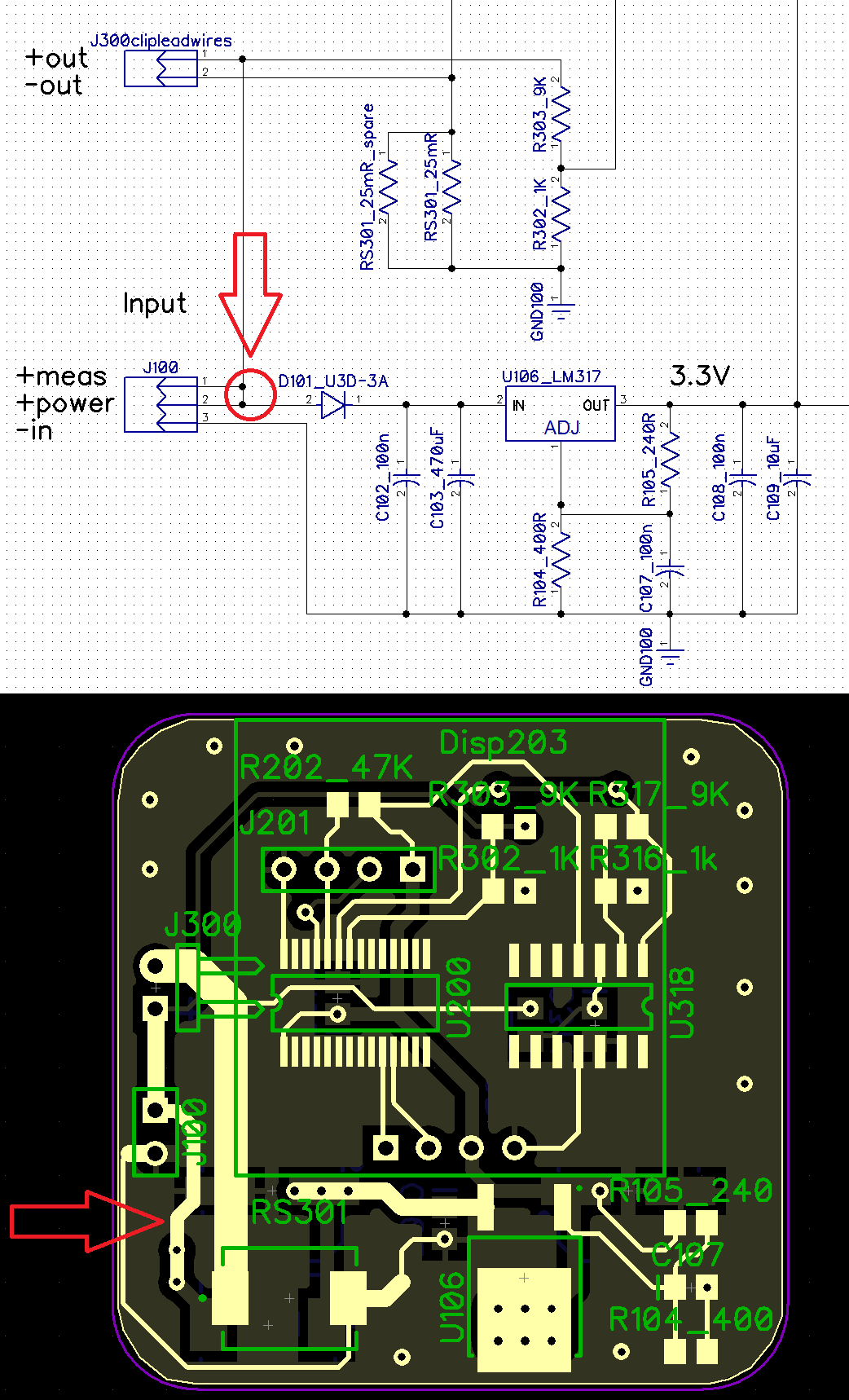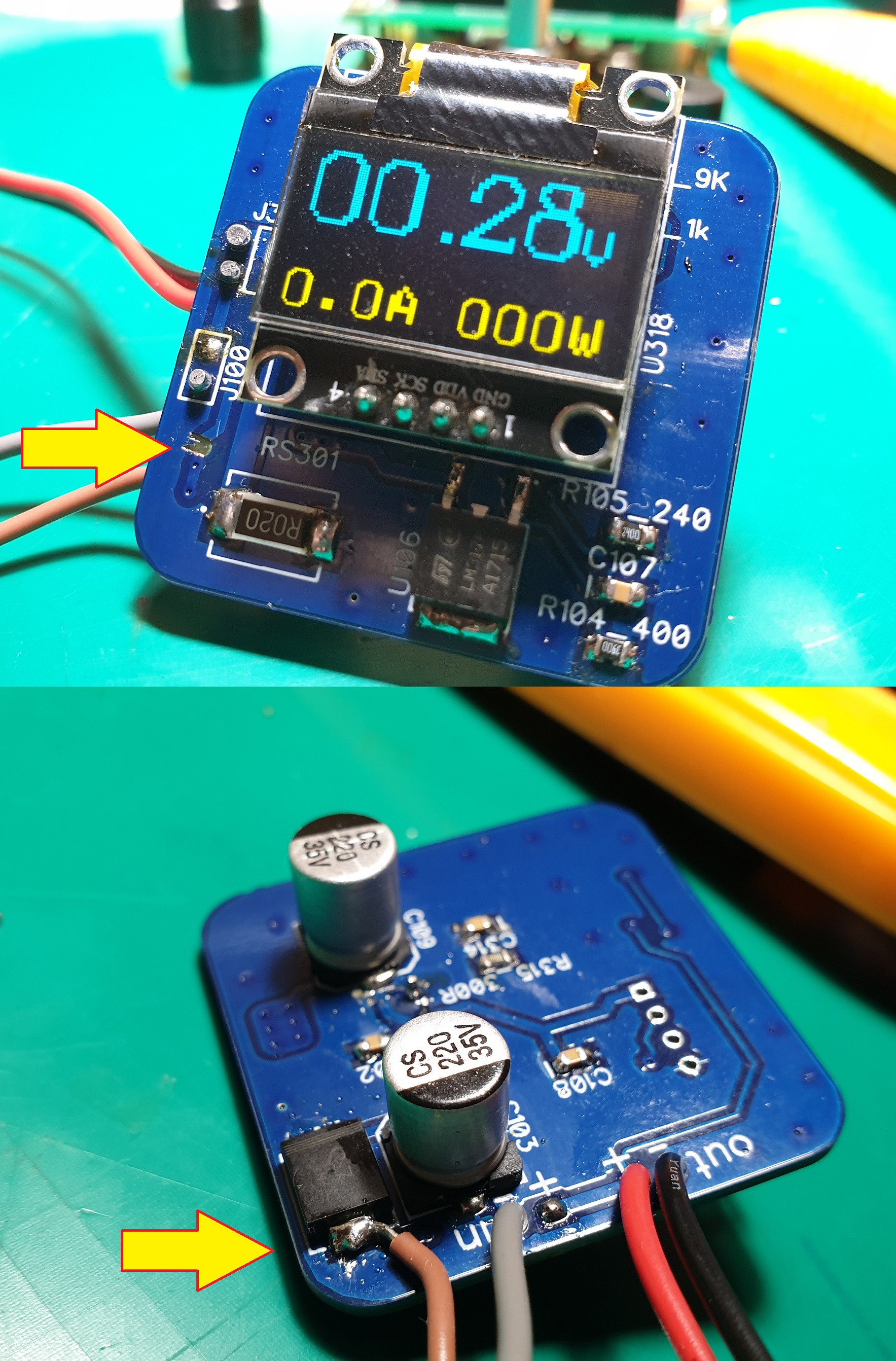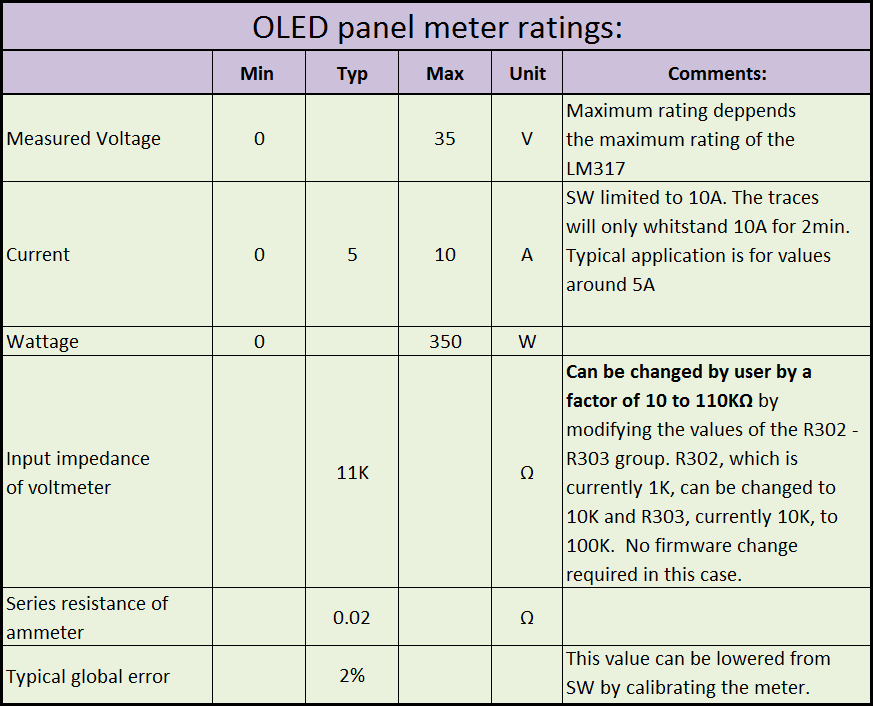-
Warnings and precautions
03/18/2021 at 17:54 • 0 commentsThis project could present some potential dangers if it is not handled properly.
- Short circuits or currents that are higher than 10A on the meter could damage the equipment and/ or generate domestic fires.
- Negative voltages on the measuring output of the meter are not allowed. The entire board and all the electronics in it are reverse polarity protected through the D101 diode, but negative voltages on the output might damage the shunt and other components. Please check the maximum ratings chart posted in this project.
- This device was designed for the purpose of learning and helping others learn about these things. Do not base industrial processes on it. Do not use this for military, aero-spatial medical or automotive applications. This device was not designed or tested for these purposes.
- Do not connect this device at the mains. Do not even begin to imagine trying to measure AC~ 110 -240V with it. It was not designed for this. Failing to comply with this might result in electrocution, death, injuries, shop equipment damage and/or fire.
- The designer of this device (AKA me) assumes no responsibility for any inconvenience that might result out of misusing this design.
-
Inputs, outputs and maximum ratings
03/17/2021 at 14:31 • 0 commentsIf you watch the video, you will understand that this meter has a jumper trace on the board and this allows it to be connected in two ways. If the jumper is present, the meter will be powered from the measured voltage. This automatically means that it will only measure voltages from 6V to 35V. If the user wants to disconnect the meter power from the measured power, that can be done by removing this link right here:

You have to simply scrape off this trace or a length of 2mm out of it and interrupt its continuity. You can then solder an input power wire to the input terminal of the D101 diode on the other side of the board. This new wire will be the separate power input for the meter. In this way, the meter will measure voltages from 0 to 35V present on the J300 connector.

As for the maximum ratings this meter would be able to measure the followings:

 Marius Taciuc
Marius Taciuc

